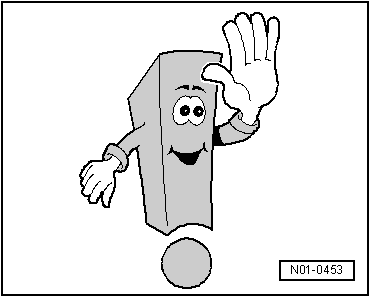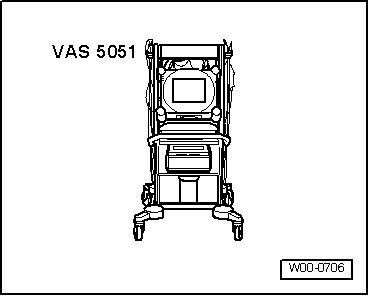Polo Mk3
|
Self-diagnosis function
Data bus
|
 |
|
|
Vehicles with data bus (from 10.99 ▸) A data bus is fitted in every vehicle from 10.99 with one exception. Exception: The gearbox EAW for the Japanese market. Communication with the engine control unit is generated via single wires. Comprehensive information on the "data bus" is given in self study programme No. 186. Advantages:
The automatic gearbox control unit sends signals into the data bus and uses signals from it. It exchanges signals (information) with other control units. Examples of signals from data bus (sent by engine control unit)
Examples of signals into data bus (used by engine control unit)
Not only does the engine control unit exchange data with other control units, the other control units exchange data with each other via the data bus, as in this example. For example, the dash panel insert with diagnostic interface for data bus -J533- (or -J285-) receives the speed signal via the data bus from the automatic gearbox control unit. It is often the case that other systems can be coded. If they are incorrectly coded, faults often occur which do not have their origin in the automatic gearbox although a fault is stored in the fault memory of the automatic gearbox control unit. If the automatic gearbox control unit detects that signals are missing or faulty, the data bus itself, another system or a component of another system may be defective. Therefore, always perform self-diagnosis of affected control units. When using the current flow diagram to check the routing of wiring, please ensure that the data bus wiring is okay. Safety functions of gearbox control unit The automatic gearbox control unit -J217- receives information from components that effect selection of gears and passes the information on to the valve body solenoid valves which via hydraulic switching control the switch elements. Control units up to 09.99 feature two programmes to allow different driving styles: sporty ("SPORT" programme) or economical ("ECO" programme). This two programmes are switched by the control unit automatically. The control unit is equipped with a fault memory so that in the event of an electronic/electrical component failure or on open circuit the fault can be determined quickly. Fault are recognized by electrical signals and stored in the fault memory. Control unit -J217- with driving situation gear changes (Fuzzy Logic) from 10.99 Determining the driving situation and driving resistance dependent gear change point happens automatically. Advantages:
Gearbox control unit fault recognition The control unit recognizes faults during vehicle operation and stores them in a fault memory => Fault tables, from page 01-20 After analysing the information the control unit distinguishes between sporadic faults and faults present at this moment (static) and stores these. If the fault is not present for a predetermined time or when driving over a longer distance, it is no longer recognized and becomes a sporadic fault. A fault is also changed to a sporadic fault when the fault memory is not erased after repairs. Sporadic faults will be displayed as "sporadically occuring faults" when the fault memory is interrogated. If the sporadic fault is not present for a predetermined time or when driving over a longer distance, the fault is erased in the fault memory. Fault memory on vehicles up to 09.99 The control unit fault memory is a "volatile memory". Faults stored are erased when the control unit is not supplied with a current. If the control unit connection or the vehicle battery is disconnected for a longer period, the fault memory is empty after approx. 1 hour. Faults present will then be recognized again when driving next. Fault memory on vehicles from 10.99 Faults remain saved even if control unit has no power supply. Safety functions of gearbox control unit If faults occur whilst driving, the control unit can activate supplementary functions or an emergency running programme. They can affect the quality and function of the gear changes. In emergency running, the 3rd and reverse gears can be selected using the gear shift lever. On vehicles from 10.99, the first gear can also be selected using the gear shift lever. If the fault occurs in "P", "N" or "R" then the emergency running mode for "P", "N" or "R" is activated. The gearbox will remain in emergency running mode; until the fault is no longer recognized by the control unit over a predetermined period. Faults which may lead to emergency running: Open circuit in wiring, short-circuit, electrical or hydraulic components defective. Renewing control units If control units are renewed, the system must be put into the basic setting , Initiating basic setting. Fault reader V.A.G 1551 and tester VAS 5051 |
 |
|
|
Electrical faults that affect vehicle performance can be determined with these devices. Functions which can be performed using this test equipment in self-diagnosis mode => page 01-17 , list of selectable functions. |
